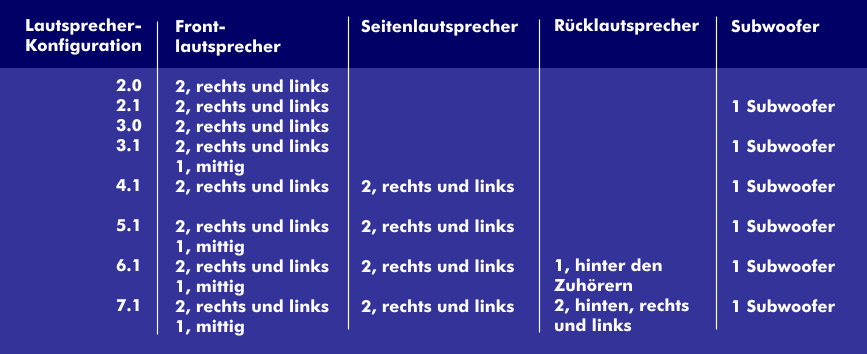sound system
Sound systems should ensure the highest possible sound quality and reproduce the sound as real as possible. The technology of acoustics has evolved from single- channel to two-channel reproduction to multi-channel reproduction with surround sound. Examples include Dolby Digital and Digital Theatre Sound( DTS).
PC-based sound systems offer surround technology with 5 and 7 speakers and a subwoofer. In order to achieve optimal sound reproduction, the signals are split for the individual speakers via an appropriate surround decoder. The number of speakers is reflected in the nomenclature: 5.1 means that the sound system includes five speakers and a subwoofer, and 7.1 even seven speakers and a woofer. In terms of arrangement, 5.1 has the subwoofer and a central speaker in the center of the listener, two to the left and right in front of the listener, and two more to the left and right of the listener. In 6.1, there is a central speaker behind the listener, and in 7.1 there are two speakers to the left and right behind the listener.
There are audio systems where the number of speakers far exceeds the numbers mentioned. For example, in Ultra High Definition( UHD) in the UHD-2 version, the sound experience is supported by a 22.2 sound system. This system works with 9 ceiling speakers, 10 speakers at head height, 3 floor speakers and 2 subwoofers. Such systems turn surround sound into 3D sound, using ceiling speakers in addition to front, side and rear speakers to emphasize the spatial sound sensation. Ceiling speakers usually appear after the woofers in the nomenclature. A 3D sound system with the designation 7.1.4 thus has four ceiling speakers. These systems include Dolby Atmos, Auro 3D and DTS:X.

